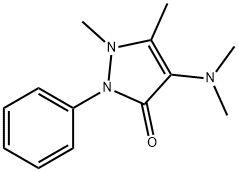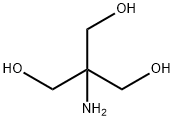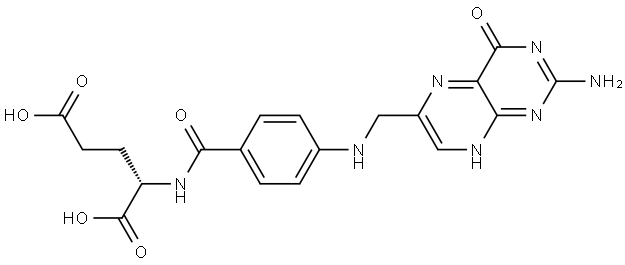1-Aminocyclopropanecarboxylic acid
Synonym(s):1-Aminocyclopropane-1-carboxylic Acid - CAS 22059-21-8 - Calbiochem;ACPC
- CAS NO.:22059-21-8
- Empirical Formula: C4H7NO2
- Molecular Weight: 101.1
- MDL number: MFCD00009944
- EINECS: 606-917-8
- SAFETY DATA SHEET (SDS)
- Update Date: 2024-10-25 16:21:11

What is 1-Aminocyclopropanecarboxylic acid?
Description
1-
Chemical properties
Crystalline
The Uses of 1-Aminocyclopropanecarboxylic acid
1-Aminocyclopropane-1-carboxylic Acid is a plant growth regulator. It is an NMDA agonist acting at the glycine site.
The Uses of 1-Aminocyclopropanecarboxylic acid
1-Aminocyclopropane-1-carboxylic Acid is an intermediate in the conversion of methionine to ethylene during the ripening in apples. It also plays an important role in the biosynthesis of the plant hormone ethylene.1-Aminocyclopropane-1-carboxylic Acid is shown to block convulsions and death produced by NMDA exposure, significantly reducing seizure induction and cell death of NMDA-treated hippocampal neurons. 1-Aminocyclopropane-1-carboxylic Acid is produced endogenously in the tomato and other higher plants as a product of the action of 1-aminocyclopropane-1-carboxylic acid synthase in the biosynthesis of ethylene.
What are the applications of Application
1-Aminocyclopropane-1-carboxylic Acid is an agonist at the NMDA receptor glycine modulatory site
Definition
ChEBI: A non-proteinogenic alpha-amino acid consisting of cyclopropane having amino and carboxy substituents both at the 1-position.
Synthesis Reference(s)
Synthetic Communications, 18, p. 141, 1988 DOI: 10.1080/00397918808077338
Synthesis, p. 127, 1984
General Description
1-Aminocyclopropanecarboxylic acid is a member of 1-aminocycloalkanecarboxylic acids.
Biochem/physiol Actions
1-Aminocyclopropanecarboxylic acid (ACC) exhibits anticonvulsant, anxiolytic, anti-addictive, neuroprotective and antidepressant-like effects in rats and mice. ACC does not affect memory or learning processes.
Properties of 1-Aminocyclopropanecarboxylic acid
| Melting point: | 229-231 °C (lit.) |
| Boiling point: | 189.47°C (rough estimate) |
| Density | 1.2245 (rough estimate) |
| refractive index | 1.4340 (estimate) |
| storage temp. | Keep in dark place,Sealed in dry,Room Temperature |
| solubility | DMSO (Slightly), Water (Slightly) |
| form | Powder and Granules |
| pka | 2.29±0.20(Predicted) |
| color | White to off-white |
| Water Solubility | Soluble in water. |
| BRN | 2076413 |
| Stability: | Store in freezer at -20°C |
| InChI | InChI=1S/C4H7NO2/c5-4(1-2-4)3(6)7/h1-2,5H2,(H,6,7) |
| CAS DataBase Reference | 22059-21-8(CAS DataBase Reference) |
Safety information for 1-Aminocyclopropanecarboxylic acid
| Signal word | Warning |
| Pictogram(s) |
 Exclamation Mark Irritant GHS07 |
| GHS Hazard Statements |
H315:Skin corrosion/irritation H319:Serious eye damage/eye irritation H335:Specific target organ toxicity, single exposure;Respiratory tract irritation |
| Precautionary Statement Codes |
P261:Avoid breathing dust/fume/gas/mist/vapours/spray. P264:Wash hands thoroughly after handling. P264:Wash skin thouroughly after handling. P280:Wear protective gloves/protective clothing/eye protection/face protection. P304+P340:IF INHALED: Remove victim to fresh air and Keep at rest in a position comfortable for breathing. P305+P351+P338:IF IN EYES: Rinse cautiously with water for several minutes. Remove contact lenses, if present and easy to do. Continuerinsing. P405:Store locked up. |
Computed Descriptors for 1-Aminocyclopropanecarboxylic acid
| InChIKey | PAJPWUMXBYXFCZ-UHFFFAOYSA-N |
| SMILES | C1(N)(C(O)=O)CC1 |
1-Aminocyclopropanecarboxylic acid manufacturer
Tosco Pharmachem Pvt Ltd
New Products
(S)-3-Aminobutanenitrile hydrochloride 4-Methylphenylacetic acid N-Boc-D-alaninol N-BOC-D/L-ALANINOL Tert-butyl bis(2-chloroethyl)carbamate 3-Morpholino-1-(4-nitrophenyl)-5,6-dihydropyridin- 2(1H)-one Furan-2,5-Dicarboxylic Acid Tropic acid 1-Bromo-3,5-Di-Tert-Butylbenzene S-2-CHLORO PROPIONIC ACID ETHYL ISOCYANOACETATE 2-Bromo-1,3-Bis(Dimethylamino)Trimethinium Hexafluorophosphate 4-IODO BENZOIC ACID 3-NITRO-2-METHYL ANILINE 1-(2,4-DICHLOROPHENYL) ETHANAMINE (2-Hydroxyphenyl)acetonitrile 4-Bromopyrazole 2-(Cyanocyclohexyl)acetic acid 4-methoxy-3,5-dinitropyridine 1-(4-(aminomethyl)benzyl)urea hydrochloride 2-aminopropyl benzoate hydrochloride diethyl 2-(2-((tertbutoxycarbonyl)amino) ethyl)malonate tert-butyl 4- (ureidomethyl)benzylcarbamate Ethyl-2-chloro((4-methoxyphenyl)hydrazono)acetateRelated products of tetrahydrofuran








You may like
-
 1-Amino-1-cyclopropanecarboxylic acid CAS 22059-21-8View Details
1-Amino-1-cyclopropanecarboxylic acid CAS 22059-21-8View Details
22059-21-8 -
 1-Aminocyclopropanecarboxylic Acid CAS 22059-21-8View Details
1-Aminocyclopropanecarboxylic Acid CAS 22059-21-8View Details
22059-21-8 -
 1-Aminocyclopropanecarboxylic acid, 98% CAS 22059-21-8View Details
1-Aminocyclopropanecarboxylic acid, 98% CAS 22059-21-8View Details
22059-21-8 -
 1-Aminocyclopropanecarboxylic acid CAS 22059-21-8View Details
1-Aminocyclopropanecarboxylic acid CAS 22059-21-8View Details
22059-21-8 -
 1-Aminocyclopropane-1-carboxylic Acid CAS 22059-21-8View Details
1-Aminocyclopropane-1-carboxylic Acid CAS 22059-21-8View Details
22059-21-8 -
 22059-21-8 99%View Details
22059-21-8 99%View Details
22059-21-8 -
 1-Aminocyclopropanecarboxylic acid 99%View Details
1-Aminocyclopropanecarboxylic acid 99%View Details
22059-21-8 -
 118753-70-1 98+View Details
118753-70-1 98+View Details
118753-70-1